Pothos is a popular houseplant, hardy enough for novice gardeners to grow with ease. Discover some of the most beautiful pothos types to grow at home.
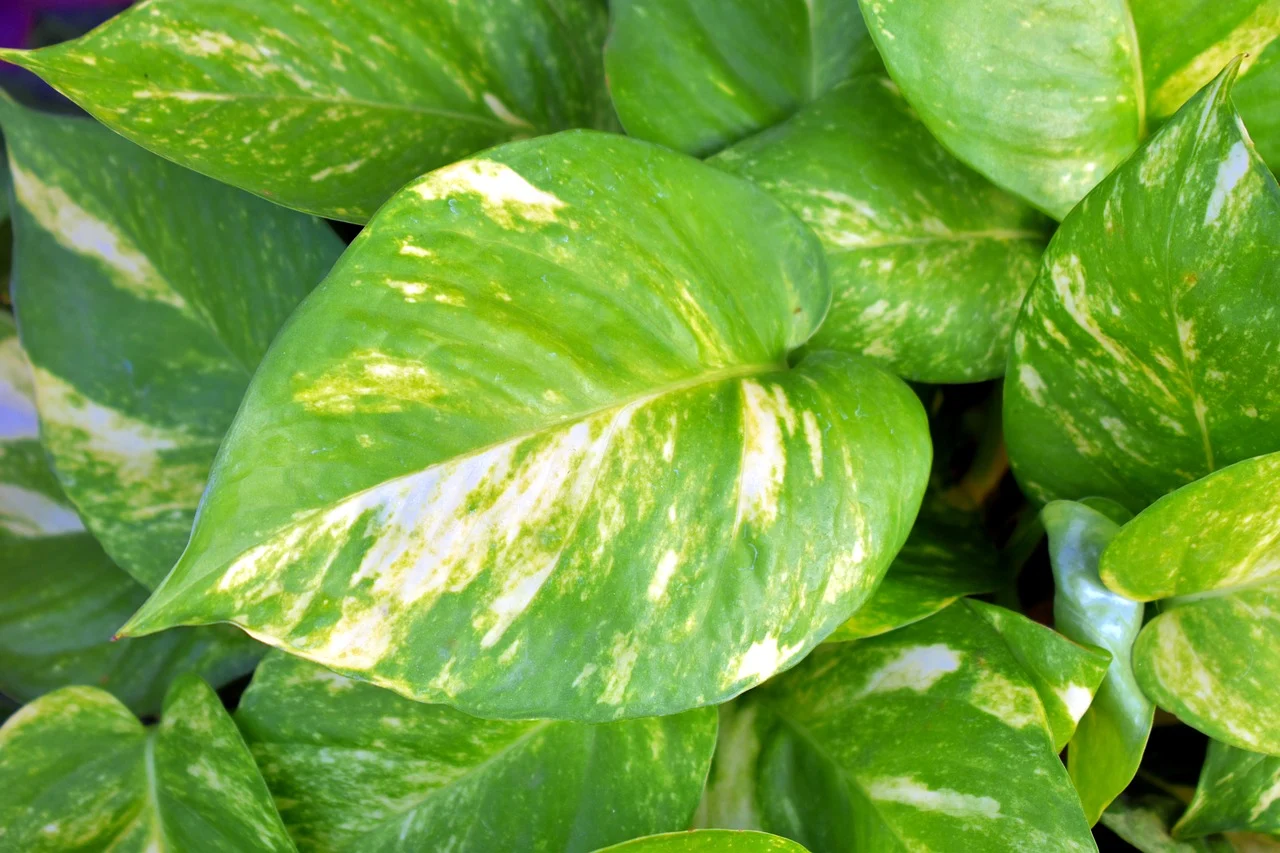
Pothos, Epipremnum aureum, is one of the easiest houseplants to grow. It doesn't ask for much maintenance, which is probably the reason why it's the first houseplant many novice gardeners go after. The plant is beautiful just the same. Its long stems and heart-shaped leaves look stunning draping from hanging baskets, window sills, and cupboards. The versatile species come in many different varieties to choose from. Let's take a look at some of the best pothos types to grow at home.
Table Of Content
In this post, we'll cover,
-
11 Favorite Pothos To Grow As Houseplants
-
Golden Pothos
-
Marble Queen Pothos
-
Pearls and Jade Pothos
-
Cebu Blue Pothos
-
Neon Pothos
-
Jessenia Pothos
-
Manjula Pothos
-
Jade Pothos
-
Snow Queen Pothos
-
Satin Pothos
-
N - Joy Pothos
-
-
Pothos Care Tips
-
Best Soil For Pothos
-
Water Requirements
-
Light Requirements
-
Fertilizer Requirements
-
With over 100,000 happy customers, we know just the kind of plants that won't be a hassle to look after and will be a sweetheart to have around just the same. Let's dive in.
11 Favorite Pothos To grow As Houseplants
There are a number of unique varieties available to enchant plant collectors. You can grow an indoor pothos garden with a host of colors and patterns. Each variety stands out with its own distinct features. Here are some of the most beautiful types of pothos to get your hands on.
-
Golden Pothos
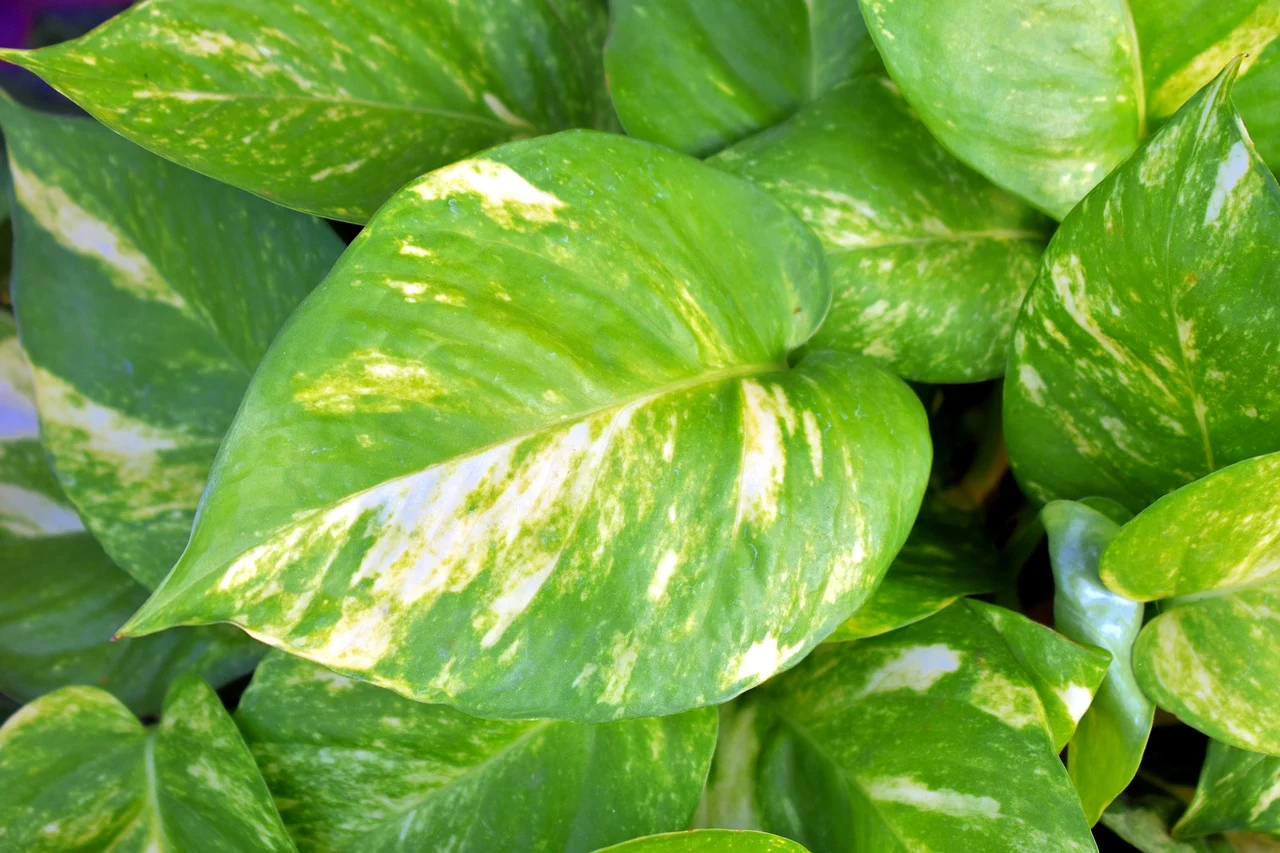
Golden pothos, Epipremnum aureum, is the original pothos and also the most common variety available at most garden centers. Golden pothos is the oldest of the pothos varieties that you have seen hanging from apartment window sills and hanging baskets ever so often.
More popularly known as the Devil's Ivy, Golden Pothos is hardy and one of the easiest ones to grow on the list. It's also the most vigorous grower among all pothos varieties. The heart-shaped bright green leaves streaked with splashes of golden or yellow makes Golden Pothos a traditional charmer.
-
Marble Queen
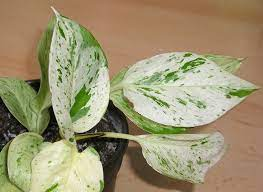
Marble queen pothos, Epipremnum aureum ‘Marble Queen’, is a common favorite of home gardeners. The green leaves and stems have creamy white stripes throughout the surface. The variety has one of the most beautiful variegations in the species, making it the focal point of any room that you place it in.
The heavy variegation of the foliage causes Marble Queen pothos to grow slower than other varieties. However, if you keep it next to a bright windowsill, or under an artificial light source, you can help the plant grow faster.
3. Pearls And Jade Pothos
Pearls and jade pothos, Epipremnum aureum UFM12 is a patented variety of Marble Queen pothos, created by the University of Florida. It has dark green leaves, with variegation in shades of white and gray, typically on the edges of the leaves. The leaves are smaller and the growth is generally slower as compared to other pothos varieties. Pearls and jade pothos asks for a regular dose of moisture to continue growing their lush foliage.
-
Cebu Blue Pothos
Cebu blue pothos, Epipremnum pinnatum ‘Cebu Blue’, is a different species from Epipremnum aureum, the standard pothos, but falls under the same genus, Epipremnum. Cebu blue pothos is a special favorite for its distinctive features.
It sports narrower leaves with a rich bluish-green color. The foliage has a glossy texture, with a metallic sheen to it. With proper lighting, the leaves will grow bigger and develop natural splits - but it will take time before you see these!
-
Neon Pothos
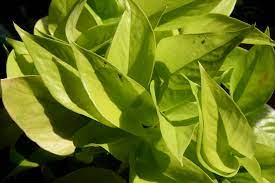
A distinctive member of the pothos family, Neon Pothos, Epipremnum aureum ‘Neon’, flaunts its heart-shaped foliage in an eye-catching bright neon-green color! The newer foliage is a brighter green, while it deepens in color slightly as it matures. Neon Pothos doesn't have any variegation, unlike other pothos varieties.
If you want a brighter color on your Neon Pothos plant, place it at a location where there's ample lighting. Low light conditions result in duller leaves.
-
Jessenia Pothos
Jessenia Pothos, Epipremnum aureum ‘Jessenia’, is a variety of Marble Queen developed by Costa Farm. It looks like a heavier variegated version of Golden Pothos, with heart-shaped leaves with lime green and dark green tones in its variegation pattern.
Similar to Marble Queen and other heavily variegated varieties, Jessenia Pothos is a slow grower. Its close resemblance to Marble Queen makes it difficult to distinguish the two varieties, though the variegation is less prominent in Jessenia Pothos.
-
Manjula Pothos
Manjula Pothos, Epipremnum Aureum ‘Manjula’, is another patented variety produced by the University of Florida. Also known as Epipremnum ‘happy leaf’, Manjula Pothos is one of the most distinctive of the pothos varieties. The leaves display a host of colors, including shades of cream, white, silver, and green.
The heart-shaped leaves on Manjula Pothos are wider and rounder than Marble Queen, and have curvy edges, unlike most other types of pothos varieties. There is a high degree of variation in the variegation pattern of the leaves on this variety. Some portions are all green, others are white, and yet others are heavily variegated. You may even find all-white leaves on the same plant! Each plant is an original natural art piece!
-
Jade Pothos
Jade Pothos, Epipremnum aureum ‘Jade’, is a commonly available plant in tropical regions. The variety is very similar to Golden Pothos, except that it has solid green leaves instead of variegated.
If you only have low-light conditions to grow your houseplant, this one is a preferred pick among the types of pothos varieties. Since the plants have more green color than other pothos, the level of chlorophyll is high due to the lack of variegation. This means that the variety has enough energy to grow optimally even in low light.
-
Snow Queen Pothos
Snow Queen Pothos, Epipremnum aureum ‘Snow Queen’, is just as it sounds. These types of pothos appear very similar to Marble Queen Pothos, except that they have around 75% cream in the variegation pattern and the remaining is light green. The stunning white variegation makes it stand out among others.
However, do keep in mind that the heavy variegation and predominantly white color of the leaves mean the plant lacks chlorophyll and its growth will be slow. Nonetheless, as long as you don't mind the slow growth, the plant is a charmer!
-
Satin Pothos
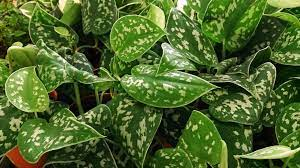
Satin Pothos or Silver Pothos, Scindapsus pictus, goes by the name of pothos, but in reality, it's an entirely different species from a different genus! Though it's a different species (Scindapsus pictus), the plant shares pretty much the same characteristics, hence the name.
The heart-shaped leaves on Satin Pothos are smaller than other pothos, deep green in color, and have silver markings on them. Give it plenty of indirect light and grow it in a hanging basket for best results.
-
N - Joy Pothos
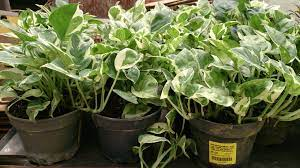
N - Joy Pothos, Epipremnum aureum ‘N-Joy’, is another patented pothos variety from 2007. It sports green leaves with white variegation. It has long curling stems and an irregular leaf shape, which is unique for every leaf.
In usual conditions, N - Joy is a slow grower. Place it in bright light conditions to promote growth and increase the level of variegation on the leaves.
Pothos Care Tips
Pothos plants are among the easiest to care for. Still, here are some things you should know if you want to keep them in shape for years,
-
Best Soil For Pothos
Pothos need light, rich soil with good drainage and optimal moisture retention at the same time. A mix of potting soil, perlite, and peat moss combined in equal portions is the ideal choice for growing pothos plants.
-
Water Requirements
In general, pothos will need to be watered once every week in the warm seasons, and once every two weeks in colder seasons. Allow the soil to dry out between waterings. Though pothos cuttings can grow in water, do not let the roots sit in standing water if it's growing in soil.
-
Light Requirements
They can grow in a variety of light conditions, including low light. However, without optimal light, growth will be slow and the leaves won't be as bright as they typically are for that specific pothos variety. Direct sunlight isn't good for the foliage either. Give them bright, indirect light for best results.
-
Fertilizer Requirements
Pothos are not heavy feeders. Monthly or bi-monthly applications of diluted, liquid fertilizer are sufficient to keep them healthy. Water-soluble, all-purpose fertilizer works best for feeding pothos. Humboldts Secret Starter Kit comes with a complete package of liquid fertilizers to cater to the all-round needs of most plants, including pothos.
Conclusion
So which variety best matches your styles? No matter which variety you choose, it will look stunning in your home as long as you give it some care and attention. Whether you've already got a pothos or planning to get one soon, order Humboldts Secret Starter Kit today so your favorite plant doesn't go hungry!
